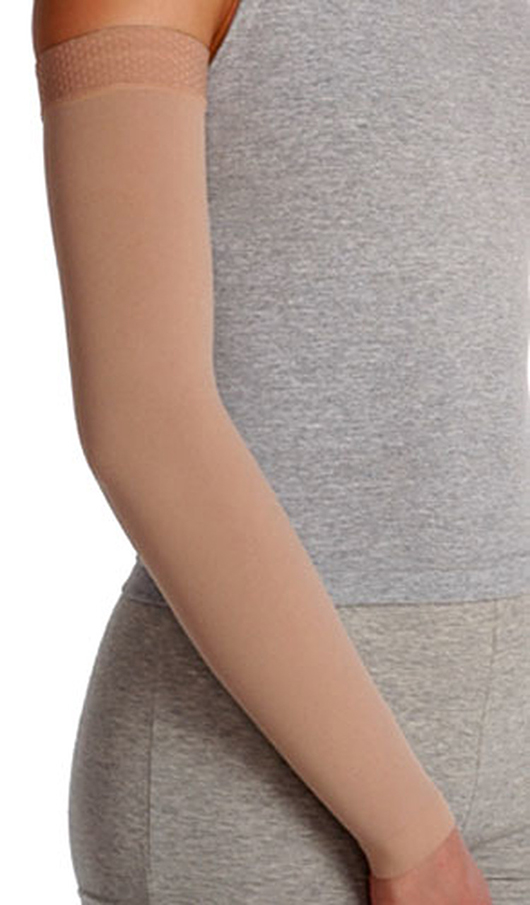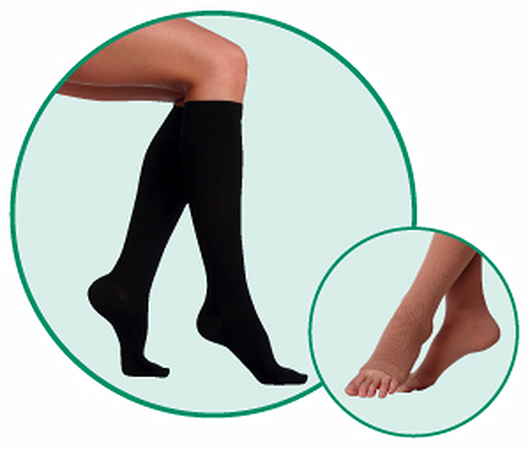What Is Lymphedema and How You Can Treat it with Proper Lymphedema Products?
Jul 17th, 2020
Lymphedema is a serious medical complication that can arise after breast cancer surgery. It can lead to a host of secondary health issues and cause permanent damage to your body. Understanding the nature and causes of lymphedema can help you reduce your risk and assist with managing the condition if it occurs.

What is Lymphedema?
There are two types of lymphedema: primary and secondary. Primary lymphedema is a rare congenital disease that is caused by developmental problems with the lymph vessels that cause a malfunction in the lymphatic system.
Secondary lymphedema is a more common condition that can occur after breast cancer surgery in which the lymph nodes are removed, or due to certain malignant diseases. It is characterized by a buildup of lymph fluid in the fatty tissues surrounding the wound site and in the arms or legs and can lead to further health issues including an increased risk of infection, cellulitis, and permanent damage to soft tissue.
How Does the Lymphatic System Work?
The lymphatic system is vital for proper immune function, and the production of lymph fluid is triggered when the body endures physical trauma or it recognizes a foreign body. The lymphatic system is comprised of several essential components including:
- Lymph fluid which consists of salts, proteins, water, and white blood cells that are necessary to combat infection
- Lymph vessels which contain a one-way valve that works in conjunction with your body’s muscles to circulate lymph fluid
- Lymph nodes that are located a various point in the body such as the armpits, groin, and neck, and are glands that act as filters for white blood cells, tumor cells, and pathogens
- Organs including the tonsils, adenoids, spleen, and thymus.
Your lymphatic system produces white blood cells that produce antibodies that attack pathogens and damaged cells to heal your body. If any part of your lymphatic system is damaged or cannot function, it cannot drain lymph fluid back into the bloodstream causing a buildup of fluid in the tissue.
Signs and Symptoms of Lymphedema
It is important to remain alert for signs of lymphedema, if left untreated the condition can lead to a host of life-threatening side effects and cause long term damage. Symptoms to be aware of include:
- Swelling in all or part of the arm or leg including fingers and toes
- Heaviness or tightness in your limbs
- Discomfort or aching in the muscles of the affected limb
- Limited range of motion
- Persistent recurrent infections
- Skin fibrosis
Swelling due to lymphedema varies in severity from mild changes to the affected area to extremely noticeable growth that impinges on your ability to use that part of the body. For cancer patients, symptoms of lymphedema may not be apparent until years after surgery.
Causes of Lymphedema
Lymphedema occurs when your system is unable to adequately drain lymph fluid back into your bloodstream which may have several causes.
Cancer treatments such as lymph node removal inhibit the function of your lymph system, while radiation therapy can cause inflammation or scarring to lymph nodes. You are at a higher risk of developing lymphedema after cancer surgery if you are overweight, over the age of 65, or suffer from psoriatic or rheumatoid arthritis.
Cancer cells or tumors can also block lymph vessels obstructing the flow of lymph fluid, and infections or parasites can lead to swelling when your lymphatic system has poor drainage.
Treating Lymphedema with Compression Products
It is recommended that you visit a doctor as soon as you observe the signs and symptoms of lymphedema as early intervention offers the greatest chance of reversing and recovering from the condition.
If you are going to have breast cancer surgery which includes lymph node removal, or radiation therapy aimed toward your lymph nodes, consult your doctor about wearing post-surgical compression garments as a preventative measure. Compression garments are also one of many viable treatment options available for patients already suffering from lymphedema.
Compression garments work by putting pressure on the affected arm, leg, or chest to boost circulation and reduce swelling and are available as bras, vests, sleeves, gauntlets, and stockings.
What to Look for in a Compression Garment
Finding high-quality compression garments ensures that they function properly and provide consistent pressure to improve circulation. When shopping for compression garments there are a few essential features to look for.
Stretch Knit
Stretch knit fabric is essential as it is the tension created by the fabric that generates the pressure that circulates the lymph fluid. Look for garments with multidirectional high-performance fabrics that retain their elastic properties even after multiple washes.
Gradient Compression
Gradient compression is the key to improving lymph flow by applying higher pressure levels at the extremities and reducing the pressure towards the upper part of the limb. This prevents both blood and lymph from pooling.
Garments such as the Juzo Soft Stocking Series 2000 use a fabric that gradually eases pressure up the leg to encourage lymph flow up and out of the leg. They come in either knee or thigh-high lengths and are available in six different stylish shades to match any outfit.
Breathable Fabric
Breathable fabrics are designed to enhance your comfort when wearing compression garments. The snug fit of the garments can lead to excessive perspiration and limited temperature control, but a lightweight breathable fabric can increase airflow and wick away moisture from the skin for better comfort.
The Anita Medical Garments Compression Bra has a high cotton content which is blended with elastane to deliver firm compression while still promoting a soft, breathable wearing experience. It also features adjustable Velcro shoulder straps and a zippered front closure for easy dressing.
Reinforced Stitching and Seams
Lymphedema garments at higher compression levels should have reinforced stitching along the seams to prevent wear and tear. The tight fit of the garments places additional strain on the seams which can deteriorate faster so double stitching provides added strength to the structure for a longer-lasting garment.

Finding the Right Level of Compression
Compression sleevesand stocking come in a range of different compression levels suitable for various conditions. Compression is measured in millimeters of mercury (mmHg) and the standard compression range levels are:
- Light 10-15 mmHg
- Mild 15-20 mmHg
- Moderate 20-30 mmHg (Medical Grade I)
- High 30-40 mmHg (Medical Grade II)
- Very High 40-50 mmHg (Medical Grade III)
Experts recommend moderate to high compression for treating patients with lymphedema, while light to mild compression is suitable for preventing lymphedema from occurring.
You should also purchase the correct size garment, as the pressure exerted is dependent on how the item fits your body. If the garment is too loose, the pressure may be inadequate to treat the lymphedema, while a garment that is too tight can cut off the blood flow and exacerbate the issue.
For compression sleeves, measure the circumference of your wrist, elbow and upper arm to find the closest fit.
Stockings come in various lengths from ankle socks through to thigh-high items. You will need to measure your leg at the knee and the widest part of your thigh.
A post-surgical compression bra or vest should have the same measurements as your standard bra. However, if you have undergone radical surgery you may experience some generalized swelling that can alter your natural size and shape. The best option is to book a professional fitting with a certified fitter to find the right compression garment for your body and health needs.

Preventing Lymphedema
In addition to using compression garments, there are numerous ways you can manage and prevent lymphedema from occurring after breast cancer surgery.
- Drink plenty of water
- Exercise regularly
- Eat a low sodium diet rich in immune-boosting foods
- Avoid wearing tight clothing
- Elevate your arms or legs above your heart when possible
- Do not use hot or cold packs
- Look after your skin and protect yourself from injuring your affected limbs
It is also important that you avoid any medical procedures such as blood donations, or IV drips in your affected arm. You can protect yourself by wearing medical alert jewelry that notifies EMTs and medical staff of your condition in the event of an emergency.
In Sum
Lymphedema is a serious condition that can significantly affect your quality of life if not managed properly with compression garments and changes to your lifestyle. Before any procedure, talk with your health care professional about whether you are in a high-risk group for lymphedema and discuss preventative measures and potential treatments to address the issue.
Mastectomyshop.com carries a wide selection of quality compression garments from a range of trusted brands including Juzo, Jobst, and Anita. Browse our catalog online or contact us at (877) 413-2272 to find out more about how compression garments can prevent and treat lymphedema.



